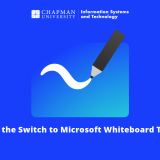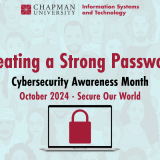COVID-19 Scams on the rise
March 30, 2020
The Office of Information Security is receiving notifications about new scams and phishing emails that use the Coronavirus pandemic as an “attention-grabber”.
Some of the most recent scams and hacks:
- The ‘Emergency – COVID-19 Informator’ or ‘COVID-19 Inform App’.
- Phishing emails with Ransomware attachments
- Corona Antivirus
Read Source article here.Additional tips and tricks to stay safe:
- Wash your hands
- Stay home and practice social distancing
- Change your home router password (use a strong password, over 8 characters, numbers, upper lower case letters, special characters)
- Do not connect to open wireless networks (that do not require a password to connect to)
- Go to the source: If you need to obtain information or you receive an email that urges you to take action, go to the source. EG: if you receive an email from your bank, check with your bank using the information posted on the banks official website. If you receive an email pretending to come from the cdc , go to the cdc.gov website.
- Maintain your Operating System (Windows, Mac) up to date by installing the latest updates.
- Use a reputable Anti-Virus program – Microsoft Defender or Security Essentials is a good start. Keep your anti-virus up to date.
- If you receive any suspicious emails, please use the “Report Message” button on the Microsoft Outlook toolbar to send us the email.


